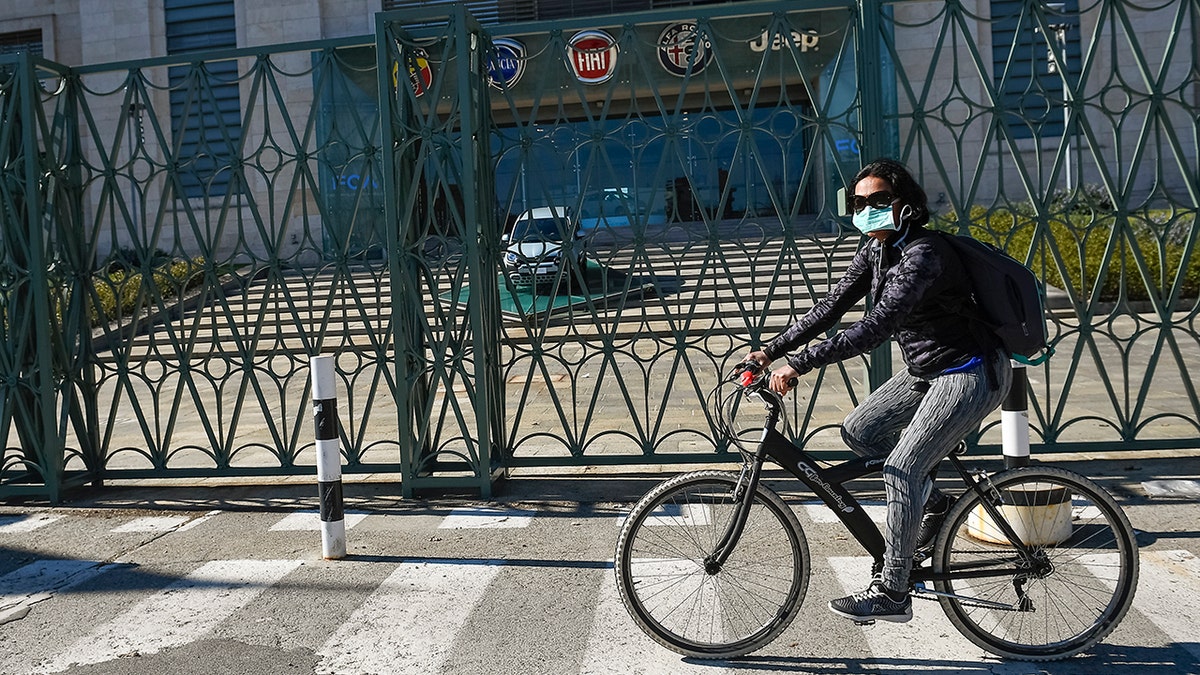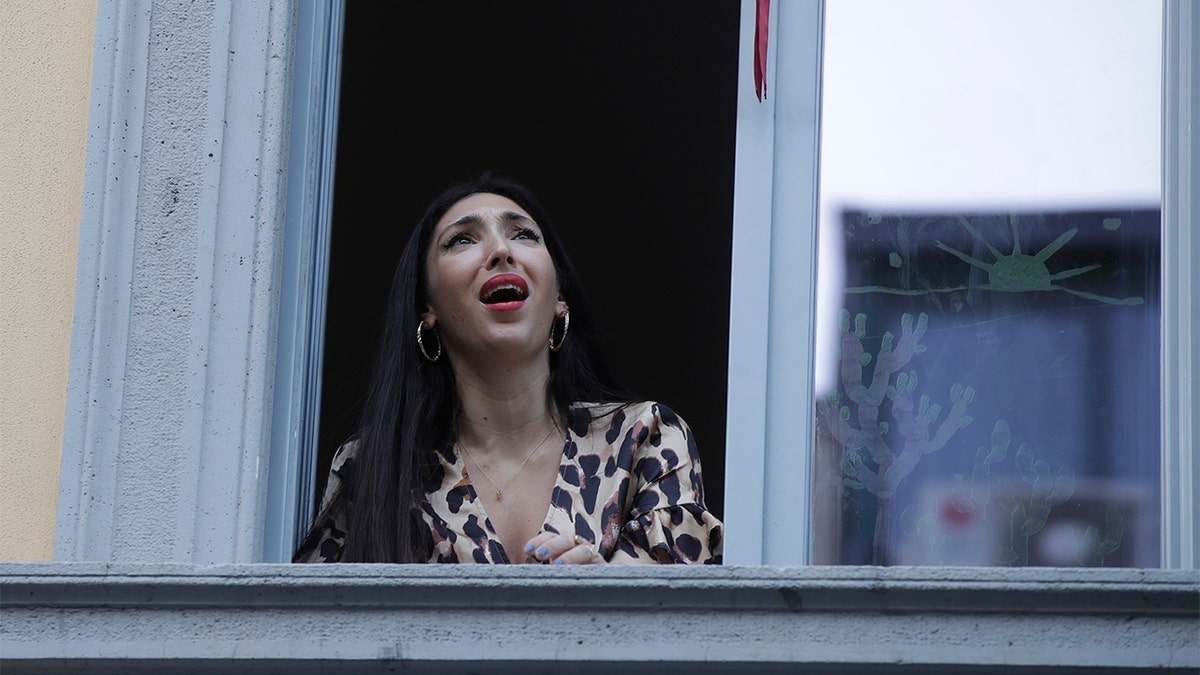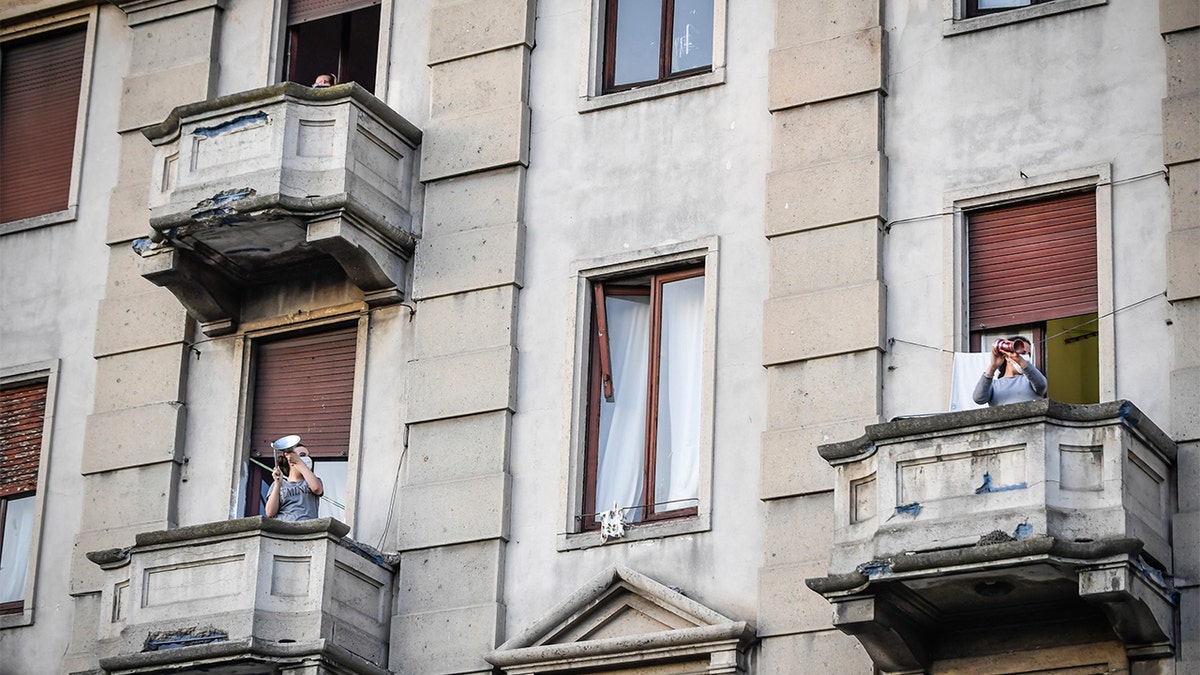Italy remains on lockdown as coronavirus death toll continues to rise
Italians break out in song amid coronavirus crisis; Fox News correspondent Amy Kellogg reports from Florence, Italy.
Get all the latest news on coronavirus and more delivered daily to your inbox. Sign up here.
Once the beacon of European fun, frivolity, fashion, food, and passion, Italy has fast fallen into the shadows of a ghost nation, debauched by the coronavirus, a cracking medical infrastructure, and rising death toll.
Outside of China, the illustrious nation of 60.5 million has become the focal point of the outbreak, with the second-highest number of infections. As of Wednesday afternoon, almost 14,500 people were documented to have contracted the disease and almost 3,000 people have already died. The past 24 hours have brought about the country’s highest single-day spike in deaths, claiming the lives of over 475 people. More than 2,000 people are hospitalized and in intensive care.
So what went wrong?
CLICK HERE FOR COMPLETE CORONAVIRUS COVERAGE
“The massive and sudden surge of seriously and critically ill patients has completely overwhelmed hospitals in the northern region of Italy,” Dr. Dena Grayson, a Florida-based medical doctor and biotechnology consultant, explained. “This sudden surge has caused the case-fatality rate to skyrocket in the northern region of Italy, because there simply aren’t enough ICU beds or ventilators for every patient, forcing doctors with the grim decision of picking who gets the ICU bed – and has a chance of surviving – versus who doesn’t, and likely won’t survive.”
Moreover, Grayson stressed, Italians have lagged in broad-based coronavirus testing, despite it proving effective in combating the spread.
“In one small town near Venice, where aggressive testing and retesting was employed — even of people with NO symptoms — coupled with contact tracing and strict quarantines, the spread of the virus was completely stopped, showing that South Korea’s approach can be applied in other countries with great success.”
CORONAVIRUS TRIGGERS MASSIVE SPIKE IN FIREARMS AND AMMUNITION SALES
According to one Rome-based security expert, who requested anonymity as not authorized to speak on the record, intelligence reports alerted the government to the potential pandemic just days after its infiltrated China late last year. But weeks went by before any serious action was taken in Rome.
And then, it was a little too late.
“Everyone was just being told it was China’s problem,” said the source. “That it wouldn’t come here.”

MIRAFIORI FACTORY, TURIN, ITALY - 2020/03/11: A woman wearing a respiratory mask rides past Fiat Mirafiori car plant that today is part of FCA (Fiat Chrysler Automobiles). FCA temporarily closed four plants (Pomigliano, Melfi, Cassino and Atessa) across Italy to prevent spread of COVID-19 coronavirus. (Photo by Nicolò Campo/LightRocket via Getty Images)
However, others claim that some of the familial and cultural markers that define Italian way-of-life may have, in this case, exacerbated the outbreak.
A new report published on the Open Science Framework by researchers at the University of Oxford over the weekend affirmed that Italy bestows one of the oldest populations globally – 23.3 percent of citizens are over the age of 65 – and many households are multigenerational, either still living under the same roof or close by with frequent large family interactions.
“It is becoming clear that the pandemic’s progression and impact may be strongly related to the demographic composition of the population,” the research paper states. “Specifically, the population age structure.”
Compared to much of Europe and even the world, Italy also has one of the longest life expectancies, averaging 82.5 years, according to the World Bank. By comparison, the U.S.'s is 78.6. Based on what scientists know so far about the coronavirus, officially referred to as COVID-19, the older one is, the more vulnerable they are to dying from associated complications spurred on by the infection.
“Italians are incredibly communal, social people who live in multigenerational family clusters and multifamily housing units. Social distancing is the opposite of Italian culture,” noted Dr. Summer McGee, dean of the School of Health Sciences at the University of New Haven. “The wonderful family and community-centric nature of Italians has become their greatest vulnerability in the time of a global pandemic.”

Opera singer Laura Baldassari leans out of her window to sing during a flash mob launched throughout Italy to bring people together and try to cope with the emergency of coronavirus, in Milan, Italy, Friday, March 13, 2020. Italians have been experiencing yet further virus-containment restrictions after Premier Giuseppe Conte ordered restaurants, cafes and retail shops closed after imposing a nationwide lockdown on personal movement. For most people, the new coronavirus causes only mild or moderate symptoms. For some it can cause more severe illness. (AP Photo/Luca Bruno)
Nonetheless, Italy was one of the first nations to quickly impose a travel ban on all flights from China after detecting its first case of the novel virus on January 29, 2020. The following day, Prime Minister Giuseppe Conte declared a state of emergency for a minimum period of six months. But within 20 days, that single case had ballooned into more than 12,000.
It was on February 18 that doctors in the small northern town of Codogno confirmed what was believed to be the first “non-imported” coronavirus case in a 38-year-old man who was hospitalized with a persistent and dangerously high fever.
The vital and ensuing weeks that followed were – as was the case in much of the world forced to grapple with the unique disease – hamstrung by internal politics and debate over whether worries were being overblown and the severe economic repercussions that would stem from more stringent measures being put in place.
“Italy was in a bit of denial and did not move fast enough to engage in social distancing and lockdown measures. This is the same problem we now are seeing in the United States,” McGee cautioned. “Spring Breakers are still filling our beaches in Florida and traveling around the country in the same way Italians gathered in restaurants and piazzas for weeks before locking down.”

A man wearing a mask rides past the Colosseum in Rome, Sunday, March 15, 2020. Authorities around the world turned to increasingly drastic measures to try to slow the spread of the new coronavirus, with lockdowns, curfews and travel restrictions spreading. For most people, the new coronavirus causes only mild or moderate symptoms. For some, it can cause more severe illness, especially in older adults and people with existing health problems. (AP Photo/Alessandra Tarantino)
But the viral bomb exploded with full force, and the healthcare system quickly reached a critical point.
Limited travel restrictions in some of the hardest-hit areas were put in place on March 1, but as infection rates began multiplying seemingly on the hour every hour, a full nationwide lockdown was ordered by Conte on early last week.
For some Italians consumed by the suffering, the anger is largely aimed not only at their own leadership – but the Chinese government, amid a swirl of reports that indicate Beijing knew about the disease for several weeks before alerting officials at the World Health Organization (WHO) and embarked on their campaign of covering up the mess and apprehending those who dared speak out.
“There was no alarm to start with,” said Laris Gaiser, a security studies expert and member of the Italian Team for Security, Terroristic Issues and Managing Emergencies (ITSTIME). “The Chinese deception on the issue has been huge.”
US PHARMACEUTICAL INDUSTRY AIMS TO WREST SOME DRUG PRODUCTION BACK FROM CHINA
In Gaiser’s view, Italy’s problem once the virus hit was perpetuated by the fact that it has a very high rate of elderly persons, a low number of intensive care hospital beds – less than 5,000 versus some 25,000 in nearby Germany – and challenges with crisis management.
“At the very beginning, this was an issue due to political competition between regions and the central government who did not seem to understand the situation,” he explained.
Epidemiologists now assume that for weeks before that initial January 29 detection, coronavirus was spreading unhinged and likely through young, healthy individuals who exhibited no or very mild symptoms. Some medical experts speculate that there were more than likely deaths from pneumonia and other coronavirus-related causes during that time period too, but the patients were not tested for coronavirus as very little was known about the disease, and the Chinese government was for a long time insisting that it could not be transmitted through human to human contact.

People lean out of their home's balconies to play and sing during a flash mob launched throughout Italy to bring people together and try to cope with the emergency of coronavirus, in Milan, Italy, Friday, March 13, 2020. Italians have been experiencing yet further virus-containment restrictions after Premier Giuseppe Conte ordered restaurants, cafes and retail shops closed after imposing a nationwide lockdown on personal movement. For most people, the new coronavirus causes only mild or moderate symptoms. For some it can cause more severe illness. (Claudio Furlan/LaPresse via AP)
While most Italians are accepting of the omnious rope that has been placed around their once abundant lives – working from home, video-chatting with friends and family, cooking, reading, forming choirs and singing songs from their balconies – some expressed frustration toward those not adhering to the strict lockdown.
“There are imbeciles who go outside without any real needs, and the virus continues to spread,” lamented one Bari-based professional. “Going for jogs and walks without any reason. We’re told to stay indoors, but people still aren’t understanding what is really happening.”
Andrew Huff, a California-based infectious disease epidemiologist, warned that the wave engulfing Italy might very well be the United States in two to three weeks’ time.
“There are major disruptions to supply chains taking place, and it (has been) confirmed that the disease is being spread via aerosols and fomites,” he said. “That means big trouble.”
And even though the government-mandated shutdown across the country has been enforced through to April 2, the vast majority of Italians are preparing for it stretch out significantly longer.
Yet for many trapped inside the painfully somber nation, it has come down to mourning and waiting game, steeped in tragedy and the unknown. In some of the hardest-hit areas, local cemetery churches have been hurriedly converted into makeshift morgues, and the days ahead are only set to become darker.
“Italians are now really experiencing a team-working approach,” Gaiser added. “Economically, we know this is going to be worse than a war.”
